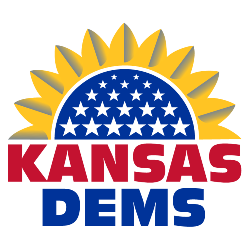Has Kansas Become a Bluer State Than Missouri?
For the first time in history, a Democratic nominee for president received a larger percentage of the vote in Kansas than in the Show-Me State

In 2018, Kansas Democrats flipped the governorship (Laura Kelly) and one congressional district (Sharice Davids in CD-03) and came within single digits of winning the election for secretary of state for the first time since 1986.
Meanwhile, this cycle Barbara Bollier turned in the most competitive performance by a Kansas Democratic U.S. Senate nominee in a quarter-century.
In neighboring Missouri, the last half-decade has not been as kind to Democrats.
The party lost control of the governorship and offices of secretary of state, attorney general, and treasurer in 2016 plus the state’s Class I U.S. Senate seat in 2018.
What is particularly noteworthy is how this diverging Democratic momentum between the two states manifested itself in the presidential race in 2020.
Donald Trump carried both Missouri and Kansas by comfortable margins, but, for the first time in U.S. history, a Democratic nominee received a larger percentage of the vote in Kansas than its neighbor to the East: Joe Biden won 41.56 percent of the vote in Kansas and 41.41 percent in Missouri.
During the previous 39 election cycles since Kansas statehood in 1861, the Democratic presidential nominee had consistently garnered a lower percentage of the vote than in the Show-Me State – and by an average of 12.5 points.
This Democratic milestone in Kansas has been a few decades in the making. In 1996, President Bill Clinton ran 11.5 points behind in Kansas (36.1 percent) compared to Missouri (47.5 percent), but that gap has closed in every subsequent cycle:
- 2000 (Al Gore, -9.9 points): Missouri (47.1 percent), Kansas (37.2 percent)
- 2004 (John Kerry, -9.5 points): Missouri (46.1 percent), Kansas (36.6 percent)
- 2008 (Barack Obama, -7.6 points): Missouri (49.3 percent), Kansas (41.7 percent)
- 2012 (Obama, -6.4 points): Missouri (44.4 percent), Kansas (38.0 percent)
- 2016 (Hillary Clinton, -2.0 points): Missouri (38.1 percent), Kansas (36.1 percent)
- 2020 (Biden, +0.2 points): Missouri (41.4 percent), Kansas (41.6 percent)
Biden’s 14.65-point loss in Kansas was closer than any presidential nominee from his party since Clinton in 1992 (-5.1 points).
The 2020 cycle was also the first time in more than 100 years, and just the third time in U.S. history, in which the Republican margin of victory in Kansas was smaller (or margin of loss was larger) than in Missouri. President Trump won Missouri by 15.4 points and Kansas by 14.7 points.
The last time Republican nominees were less competitive in Kansas than its neighbor was during the 1912 and 1916 cycles.
In 1912, President William Taft lost Kansas by 18.8 points compared to 17.6 points in Missouri.
In 1916, Charles Hughes lost Kansas by 5.9 points while coming up 3.7 points short in Missouri.
Biden’s 41.6 percent tally in Kansas was just the 13th time in 40 cycles in which a Democratic presidential nominee reached the 40 percent mark in the state.
Democrats have reached that mark in 36 of these 40 cycles since 1864 in Missouri.
Follow Smart Politics on Twitter.

This makes intuitive sense, for MO is part of the ‘Greater South’ (Ds gradually ceding ground) and KS is part of the ‘Greater West’ (Ds progressively seizing ground).
As for the governor/LTG election of 2018, the feat is somewhat less impressive than it seems. Kelly won with lower share and smaller margin than Kathleen Gilligan Sebelius in 2002, when it also flipped from R to D. Will the waxing DEM voting in Johnson and Sedgwick counties – indeed, easternmost quarter to third of the state in general – be sufficient to award the state Democrats another win in ’22? [Should Kelly or another D win, it would mark the first time since 1986 that the party holding the presidency will have won the governor & lieutenant governor posts.]
[…] five years ago, Smart Politics posited whether Kansas had become a bluer state than neighboring Missouri following the 2020 presidential […]